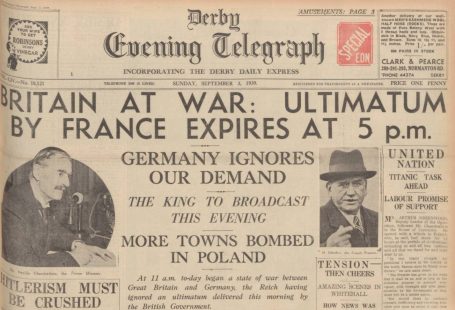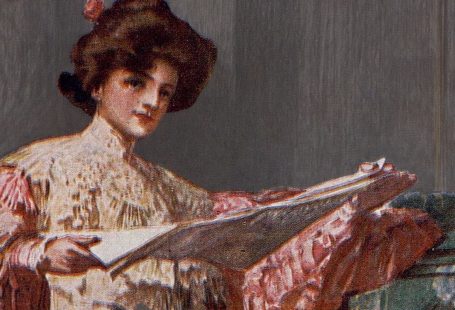This week at The Archive we are celebrating reaching an historic milestone; we now have in our collection newspaper pages from five different centuries, all the way from the seventeenth to the twenty-first century. And not only this; we have also added our earliest newspaper pages, from 1699.
Moreover, we have added 92,006 brand new pages in the past seven days, with new newspapers joining us from across the British Isles, Ireland, and even further afield! Read on to discover more about our new and updated titles.
Register now and explore the Archive
It seems fitting to start with our historic new title the Edinburgh Gazette, which represents the oldest title presently available on our Archive, with pages from the year 1699. In the seventeenth century, newspaper production was in its infancy, the early 1600s marked by heavy government censorship. However, after the Civil War, the demand for news grew, and out of this was born the London Gazette in November 1665, which was first known as the Oxford Gazette.
Edinburgh Gazette | 21 September 1699
The London Gazette was government-produced, and some thirty-four years after its first appearance the Edinburgh Gazette began publication. Published by Her Majesty’s Stationary Office, it featured articles relating to state matters, parliamentary affairs, planning, and even transport, with notices relating to road closures. The Edinburgh Gazette appeared sporadically after the year 1699, with its final issue appearing in 1793.
We move now to Ireland, which saw a publishing boom in the 1800s, as towns and cities began establishing their own newspapers. This was true of the Ballinrobe Chronicle and Mayo Advertiser, which was first published on the 22 September 1866. In an article entitled ‘Our First Edition,’ the newspaper publishers outline how Ballinrobe was in need of its own newspaper:
It is a matter of surprise that in an age of great intellectual activity, and in a town like Ballinrobe – situated in the centre of an agricultural population, and surrounded by many facilities for commercial enterprise, this important district should heretofore have been without a local journal.
The Ballinrobe Chronicle and Mayo Advertiser would run until 1903, appearing every Saturday, whilst adopting a Fenian point of view.
Ballinrobe Chroncile and Mayo Advertiser | 22 December 1866
Elsewhere in Ireland the presses were whirring. The Cavan Weekly News and General Advertiser first appeared on 18 December 1864, priced at one penny, whilst wishing ‘peace and goodwill’ to all. The publishers of this newspaper were very much aware of the newspaper publication boom, writing how ‘Hardly two centuries have passed since when there were only two newspapers in London; now almost every town and village has its newspaper.’
What made the Cavan Weekly News and General Advertiser special was its affordable price. The first edition lays out quite charmingly and naively its hopes as the region’s first penny paper:
It may be thought injudicious to publish it at so cheap a rate. Nothing can make it pay but a large circulation and we trust that by giving the latest intelligence, comprehensive reports of local news, using good paper and clean, neat, type, that the Cavan Weekly News and General Advertiser will be subscribed to, and read by every family in the town and county of Cavan.
Cavan Weekly News and General Advertiser | 28 February 1890
The newspaper would last for another forty years, ceasing publication in 1907. Our final new Irish title this week is the Cork Daily Herald. Beginning life as the Cork Daily Herald and Southern Counties Advertiser in 1857, its final addition appeared on 19 July 1901.
We move slightly further afield now for our next new title, to India, and Bangalore, now known as Bengaluru, located in the southern state of Karnataka. The Bangalore Spectator was a ‘Tri-weekly journal of News, Politics and Literature,’ appearing every Tuesday, Thursday and Saturday.
Bangalore Spectator | 3 February 1877
Rounding off our new titles this week is the Nantwich Chronicle, a weekly newspaper covering news from the Cheshire market town. This week also sees large additions to another chronicle, namely the Leicester Chronicle. A particularly historic title, with origins in the late 1700s, this title became known as the Illustrated Leicester Chronicle from 1915, with a strong emphasis on photography.
Finally, we have added more pages to Jersey title the Jersey Evening Post. Published in St Helier from 1890, this pioneering Channel Islands newspaper celebrated its 125th anniversary in 2015.
The Life and Death of a Duke
The Fourth Duke of Hamilton, James, was an important Scottish peer, who served King Charles II as his Gentleman of the Bedchamber, and was instrumental in the events leading up to the 1707 Act of Union. In 1699, he married his second wife, heiress Elizabeth Gerard, and the Edinburgh Gazette gives a wonderful account of their return to Scotland, as they processed back across the border:
Their Graces were met and Complemented at the Border by about 400 Noblemen and Gentlemen, and by the Nobility and Gentry of every place as they came along the Road hither from Berwick, and arrived here [Edinburgh] on Monday last in the Evening; Accompanied with a vast many Noblemen and Gentlemen on Horse-back, besides a Train of Coaches; And for more than a Mile the way was crowded on both sides with a great number of Spectators who welcomed their Graces Arrival; and were wonderfully pleased with the Courteous and Charitable Behaviour of the Dutchess.
This account reads like something out of a medieval pageant – or indeed a royal wedding from modern times – the streets of Edinburgh lined with spectators curious to see the nobleman with his new bride.
Hamilton Palace, seat of the Duke of Hamilton | The Sketch | 14 November 1894
But this particular story was not to have a happy ending; the fourth Duke of Hamilton’s main claim to fame being his death at the age of 54, on 15 November 1712. For James, Duke of Hamilton, was killed in a duel at Hyde Park. His opponent, Charles, Lord Mohun, was also mortally wounded, as the two men faced off over the inheritance of the Earl of Macclesfield, which the Duke of Hamilton was claiming on the behalf of his wife, Elizabeth Gerard.
Dundee Evening Telegraph | 15 November 1929
Newspapers at the time were filled with news of this tragic scandal. The Dublin Intelligence from the 13 December 1712 describes the aftermath of the Duke’s death:
Whereas by an Inquisition taken the 17th Day of November last, upon view of the Dead Body of James Duke of Hamilton and Brandon, it was found that George Macartney, Esq, was aiding and assisting the Lord Mohun to commit the Murder of the said Duke.
A duel some 170 years later | Penny Illustrated Paper | 12 June 1880
A reward went up for George Macartney, Lord Mohun’s cousin and second, who had allegedly killed the Duke whilst apparently tending to Lord Mohun. He fled to the continent, a reward of 500l was offered for his capture, but he was eventually pardoned of any crime.
Discover more historic stories from our early newspapers here.
New Titles
Title |
Year Range |
| Cork Daily Herald | 1858-1860, 1863, 1865-1867, 1872-1894 |
| Bangalore Spectator | 1877, 1880, 1882-1883 |
| Edinburgh Gazette | 1699 |
| Cavan Weekly News and General Advertiser | 1864-1868, 1870-1880, 1882-1887, 1890-1892, 1894-1896 |
| Ballinrobe Chronicle and Mayo Advertiser | 1866-1872, 1875-1877, 1879, 1882-1884, 1886-1889, 1892-1896 |
| Nantwich Chronicle | 1945-1958, 1976, 1978 |
Updated Titles
This week we have updated two of our existing titles.
You can learn more about each of the titles we add to every week by clicking on their names. On each paper’s title page, you can read a FREE sample issue, learn more about our current holdings, and our plans for digitisation.
Title |
Year Range |
| Leicester Chronicle | 1915, 1925, 1929-1933, 1948, 1950-1959, 1965, 1975, 1977 |
| Jersey Evening Post | 1901, 1904 |
You can keep up to date with all the latest additions by visiting the recently added page. You can even look ahead to see what we’re going to add tomorrow













